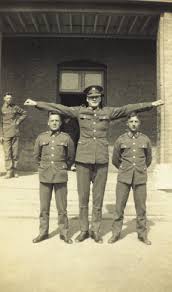The Bantams Of WW1.


When the war was declared, men in their thousands rushed off to enlist in search of adventure overseas with their colleagues, family and friends.Many men though could not join them and go with their mates even though they were fit and healthy because of the rule of height in the British Army. At that time, men must have been 5ft 3′ (160cm).
This ruling meant that many men up and down the country were rejected for military service. A lot of these men were from mining backgrounds and although helped to form the back of the Empire, it seemed were no good to the Army.
These men became so incensed by the decision that Lord Kitchener was petitioned by Birkenhead MP Alfred Bigland to allow the formation of a unit of ‘undersized’ men. This was in turn agreed to by the War Office although they would not fund it.
Mr Bigland took it upon himself to raise his own company and with that the 15thBn 1st Birkenhead The Cheshire Regiment was formed and was given the nickname the ‘Bantams’. Named after the fierce fowl famed for its fighting ability.
This news spread fast and by November 1914, the Bantams had over 3000 recruits and its 2nd Battalion. It grew even more from there and many counties and regions, even over the Commonwealth had their own Bantam battalions.

The biggest problem known about these battalions was that it was much easier for the underaged to be signed up.
The Bantams acquired a fearsome reputations for their bravery.
many men from these battalions were often drafted into tunnelling divisions or the Tank Corps due to their size.

